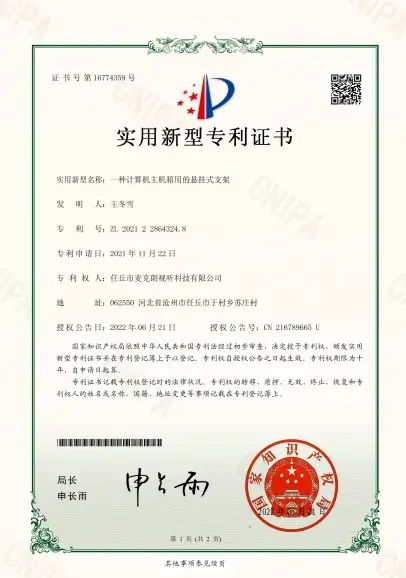Understanding VESA Standards for TVs and Their Impact on Display Compatibility and Mounting Solutions
Understanding VESA Standards for TVs and Their Impact on Display Compatibility and Mounting Solutions
Understanding VESA The Standard for TV Mounting
In the world of consumer electronics, particularly in television and monitor design, the Video Electronics Standards Association (VESA) plays a crucial role. Established in 1989, VESA is a global organization responsible for developing and promoting interface standards for video displays. One of its most significant contributions is the VESA Mounting Interface Standard (MIS), commonly referred to simply as VESA. This standard has become the benchmark for mounting televisions and computer monitors, ensuring compatibility and ease of use across a wide range of devices.
What is VESA?
The VESA standard provides a set of guidelines for the physical placement of televisions and monitors, which allows users to mount their displays securely on walls or other types of supports. At its core, the VESA mounting standard outlines specific measurements for mounting holes on the back of the devices, which are used in conjunction with a mounting bracket. These measurements are generally expressed in millimeters, detailing the horizontal and vertical distances between the mounting holes.
The VESA standard simplifies the mounting process for both consumers and manufacturers. It ensures that a TV or monitor made by one company can be mounted using a bracket from another manufacturer, as long as they adhere to the same VESA specifications. This interoperability allows users to choose from a wide variety of mounting options, from fixed wall mounts to tilt and full-motion mounts.
Common VESA Sizes
VESA mounting patterns are available in several sizes, catering to different screen sizes and weights. Some of the most common VESA dimensions include 75 x 75 mm, 100 x 100 mm, 200 x 100 mm, 200 x 200 mm, and larger patterns like 300 x 300 mm, 400 x 400 mm, and so on. The choice of size is typically dictated by the weight and dimensions of the TV or monitor being mounted.
vesa stand for tv

When selecting a VESA mount, it's essential to have accurate measurements of both the display and the mount itself. Mounts typically include support for specific VESA dimensions, and mismatches can lead to installation difficulties or, worse, damage to the device. Thus, it's crucial for consumers to check the VESA specification listed in the user manual of their television or monitor before purchasing a mount.
Advantages of VESA Standards
The implementation of VESA standards offers multiple advantages that enhance the user experience. Primarily, VESA-compliant mounts provide a reliable and secure way to position a TV or monitor at a preferred height and angle. This flexibility can dramatically enhance viewing comfort, reducing neck strain and improving overall enjoyment.
Furthermore, using a VESA mount helps save space and can contribute to a cleaner, more organized living environment. Wall-mounted TVs eliminate the need for bulky furniture, allowing for more creative interior design options. In addition, because VESA mounts are standardized, they can be easily replaced or upgraded without having to replace the TV or monitor itself.
Conclusion
In conclusion, the VESA standard serves as a vital guideline for the mounting of televisions and monitors, promoting uniformity and compatibility in the consumer electronics space. By ensuring that mounting options are widely available and interchangeable, VESA empowers consumers to set up their viewing environments to suit their unique needs and preferences. As technology continues to evolve, the principles established by VESA will remain critical in shaping how we interact with our digital displays, ensuring that the mounting of our devices is as user-friendly and versatile as possible.
-
Premium Tilt TV Mount Exporters | GPT-4 Turbo EnhancedNewsJul.31,2025
-
Reliable Tilt TV Mount Company & Manufacturer, Factory Direct PriceNewsJul.30,2025
-
Reliable Tilt TV Mount Company & Manufacturer, Factory Price & ServiceNewsJul.29,2025
-
Installing TV Wall Mount in Apartment for Secure and Sleek SetupNewsJul.29,2025
-
High-Quality Tilt TV Mount Exporters for Secure InstallationNewsJul.29,2025
-
Professional Tilt TV Mount Company & Manufacturer, Competitive PricelistNewsJul.28,2025
